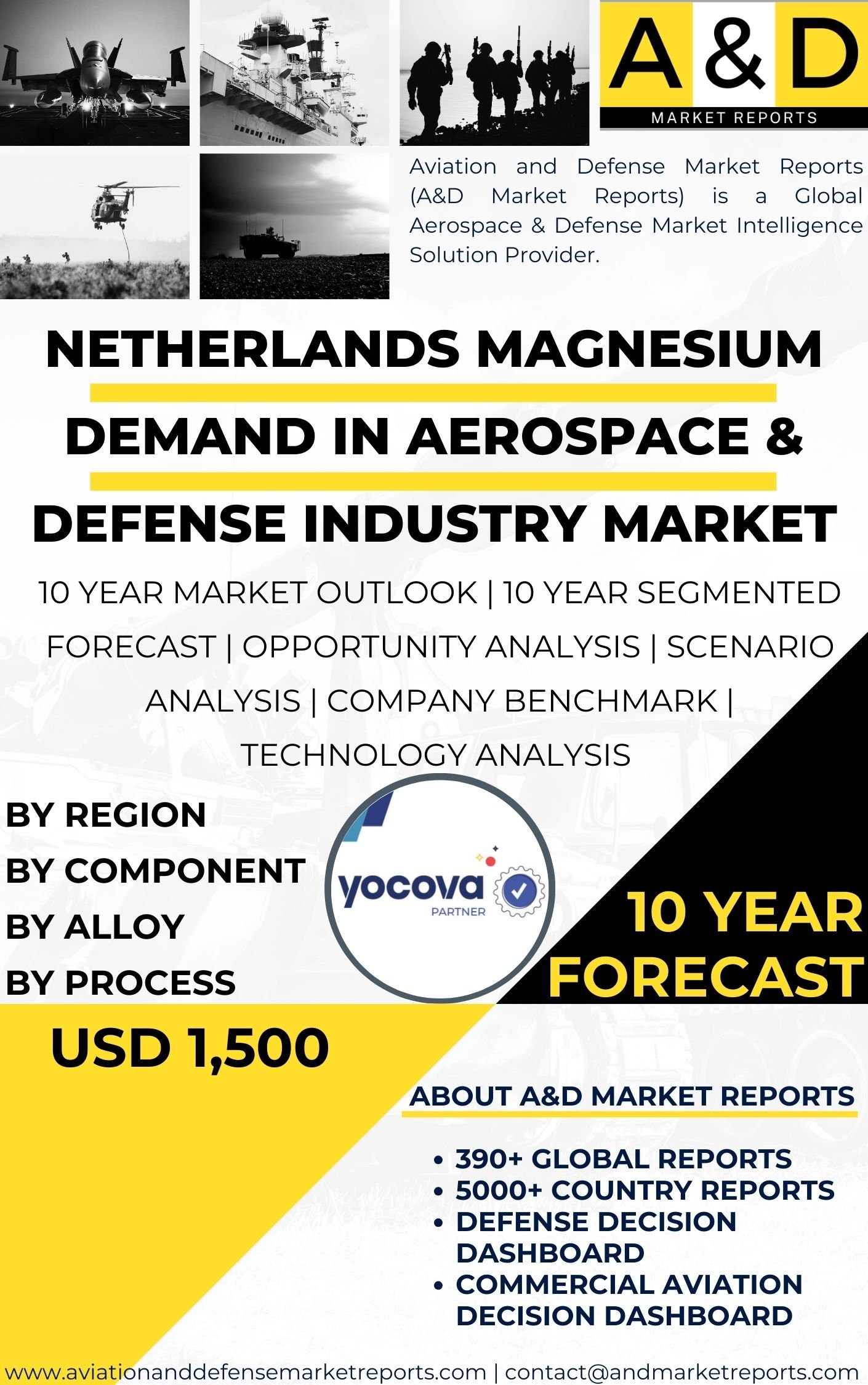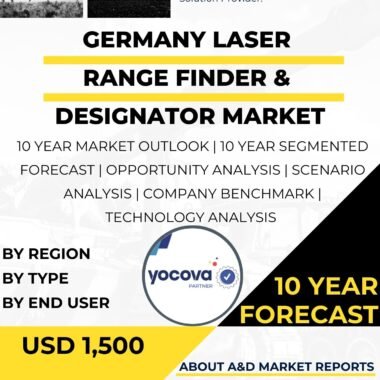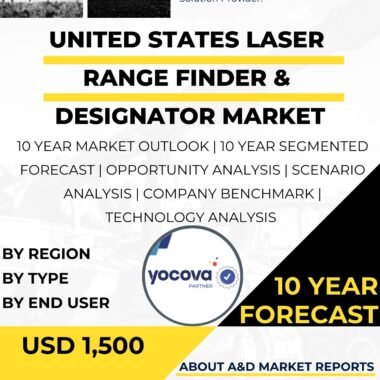Description
The Netherlands magnesium demand in the aerospace and defense industry is increasing as the country?s defense sector and aerospace manufacturing industry pursue advanced lightweight materials to improve performance, efficiency, and sustainability. Magnesium is one of the lightest structural metals available, offering a high strength-to-weight ratio, excellent machinability, and superior damping properties. These attributes make it highly desirable for both aerospace and defense applications where weight reduction translates directly into enhanced fuel efficiency, payload capacity, and maneuverability. In the Netherlands, demand is being shaped by military modernization, aerospace industry requirements, and the broader push toward sustainable materials in high-performance sectors.
The Royal Netherlands Air Force and Navy increasingly require platforms that balance survivability with efficiency. Fighter aircraft, helicopters, unmanned systems, and naval vessels all benefit from lightweight materials that improve endurance and reduce operational costs. Magnesium alloys are used in aircraft components, including gearboxes, fuselage parts, and engine housings, where weight reduction without sacrificing strength is critical. For defense applications, magnesium components are also used in armored vehicles and portable equipment, allowing for greater mobility and reduced logistical burden. As the Netherlands modernizes its air and ground fleets, the demand for magnesium-based solutions is rising in parallel.
In the aerospace sector, Dutch companies play a significant role within the broader European aerospace supply chain, particularly in the production of aircraft components and maintenance, repair, and overhaul (MRO) services. Magnesium alloys are increasingly being adopted to meet the stringent requirements of aircraft manufacturers for lighter, stronger, and more fuel-efficient designs. With the aerospace industry under pressure to reduce emissions, the use of lightweight materials such as magnesium is seen as an important step toward achieving sustainability goals. This dual demand from both military and civil aerospace sectors strengthens the market outlook for magnesium in the Netherlands.
Technological advancements in metallurgy and material science are driving greater adoption of magnesium. Modern magnesium alloys have overcome many of the limitations of earlier formulations, such as corrosion resistance and flammability concerns, through improved coatings and alloying techniques. This has expanded their applicability to more critical aerospace and defense components. Dutch research institutions and industrial partners are also investing in innovation to improve the recyclability and lifecycle sustainability of magnesium, aligning with both environmental policies and defense efficiency objectives.
Geopolitical and strategic considerations also play a role in shaping demand. NATO?s focus on interoperability and modernized platforms requires member states, including the Netherlands, to adopt the most advanced materials available. The growing emphasis on unmanned aerial systems, hypersonic platforms, and lightweight armored solutions all contribute to magnesium?s relevance. Additionally, supply chain security for critical raw materials has become a priority, with the Netherlands seeking reliable sources of magnesium within Europe or through trusted partners to reduce dependency on single-source suppliers.
However, challenges exist in expanding magnesium usage. The cost of advanced magnesium alloys remains relatively high, and production requires significant energy inputs, making sustainability a complex issue. Manufacturing processes must also be adapted to handle magnesium?s unique properties, requiring specialized equipment and expertise. Despite these hurdles, the long-term benefits of lightweight and durable components continue to justify investments.
Looking forward, the Netherlands magnesium demand in aerospace and defense is expected to grow as modernization programs and sustainability initiatives drive adoption. Continued innovation in alloys, coatings, and manufacturing processes will expand magnesium?s role in next-generation aircraft, vehicles, and naval platforms. With its strong aerospace sector, integration into NATO defense supply chains, and commitment to sustainability, the Netherlands is well positioned to see steady growth in the use of magnesium across both defense and aerospace industries.




